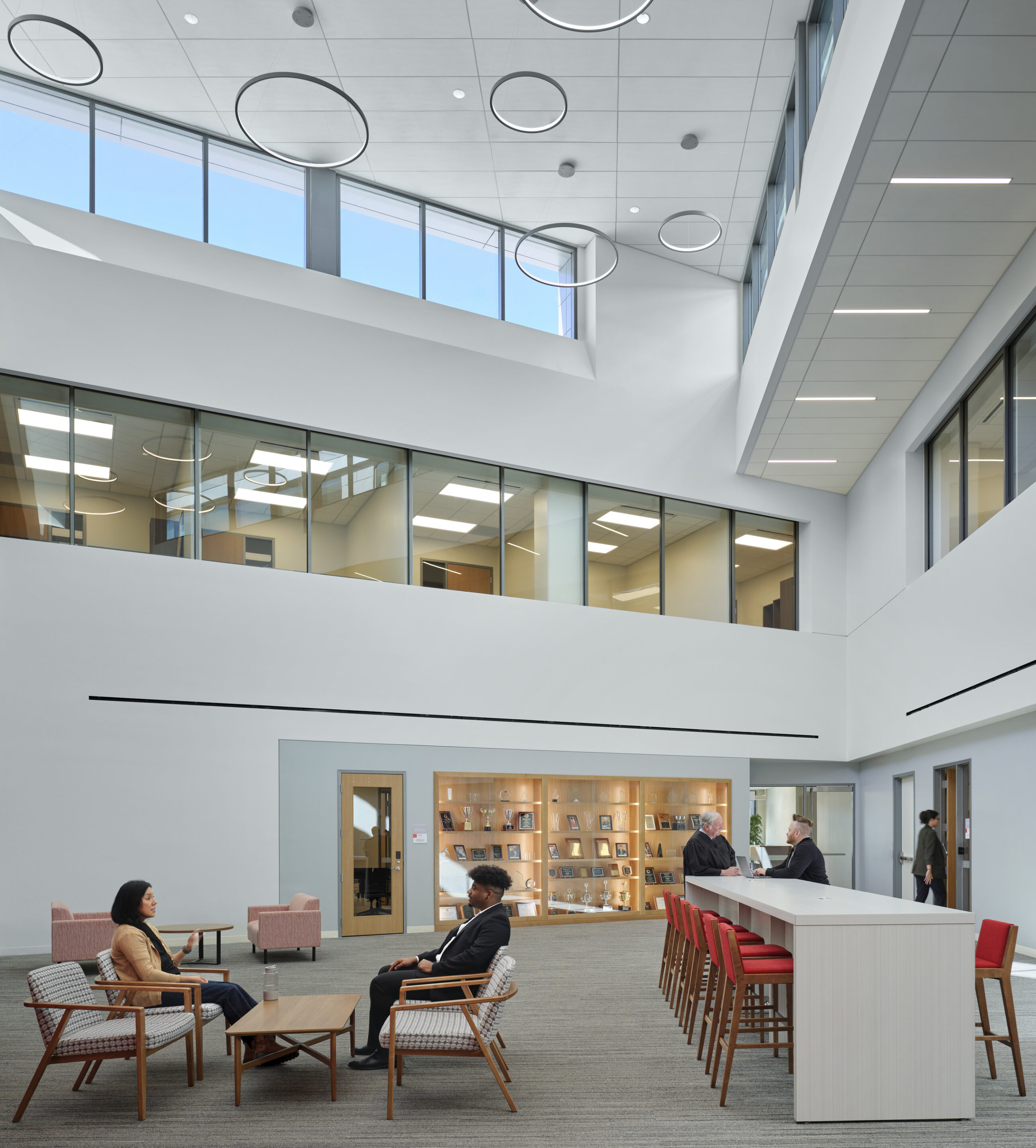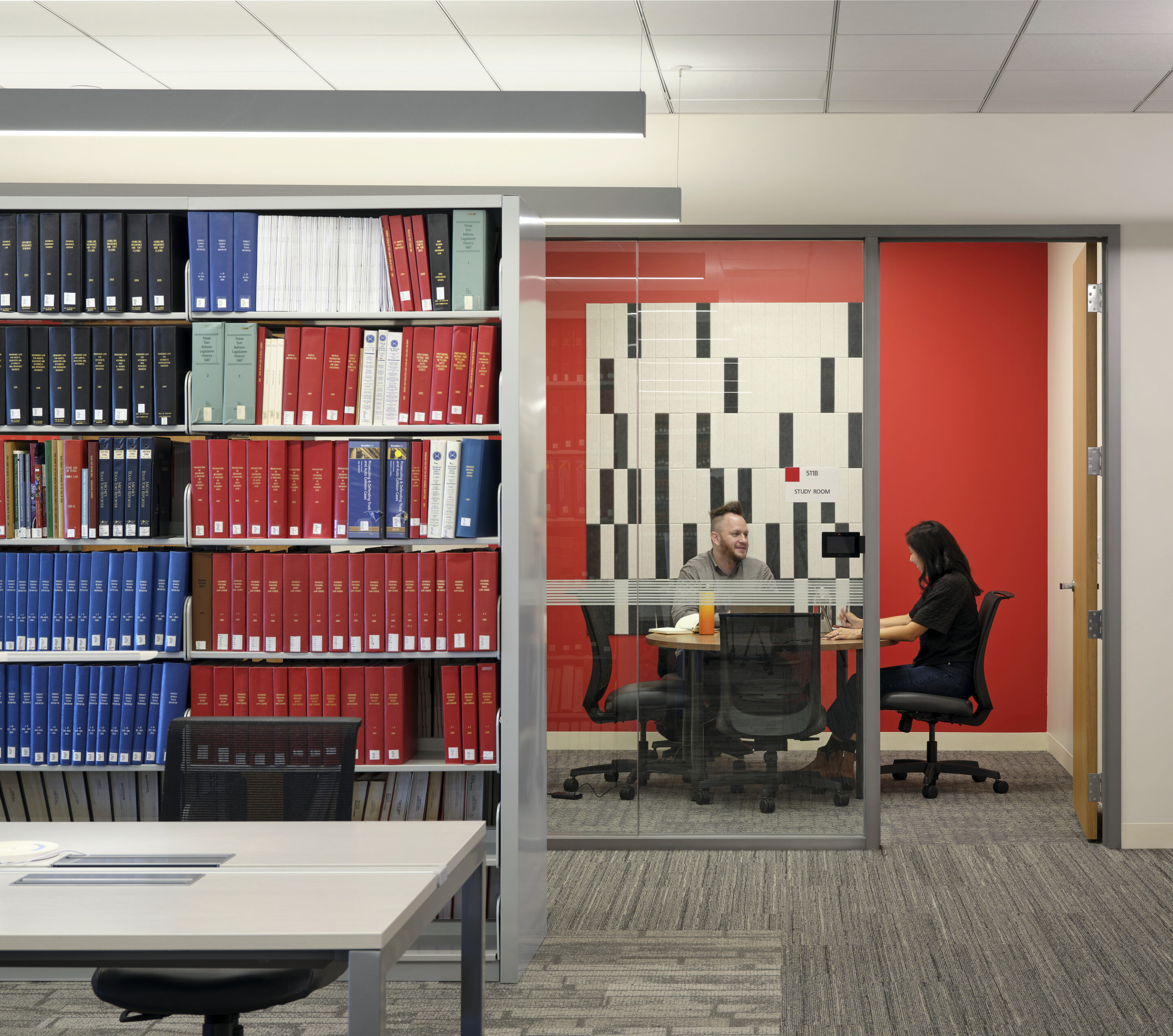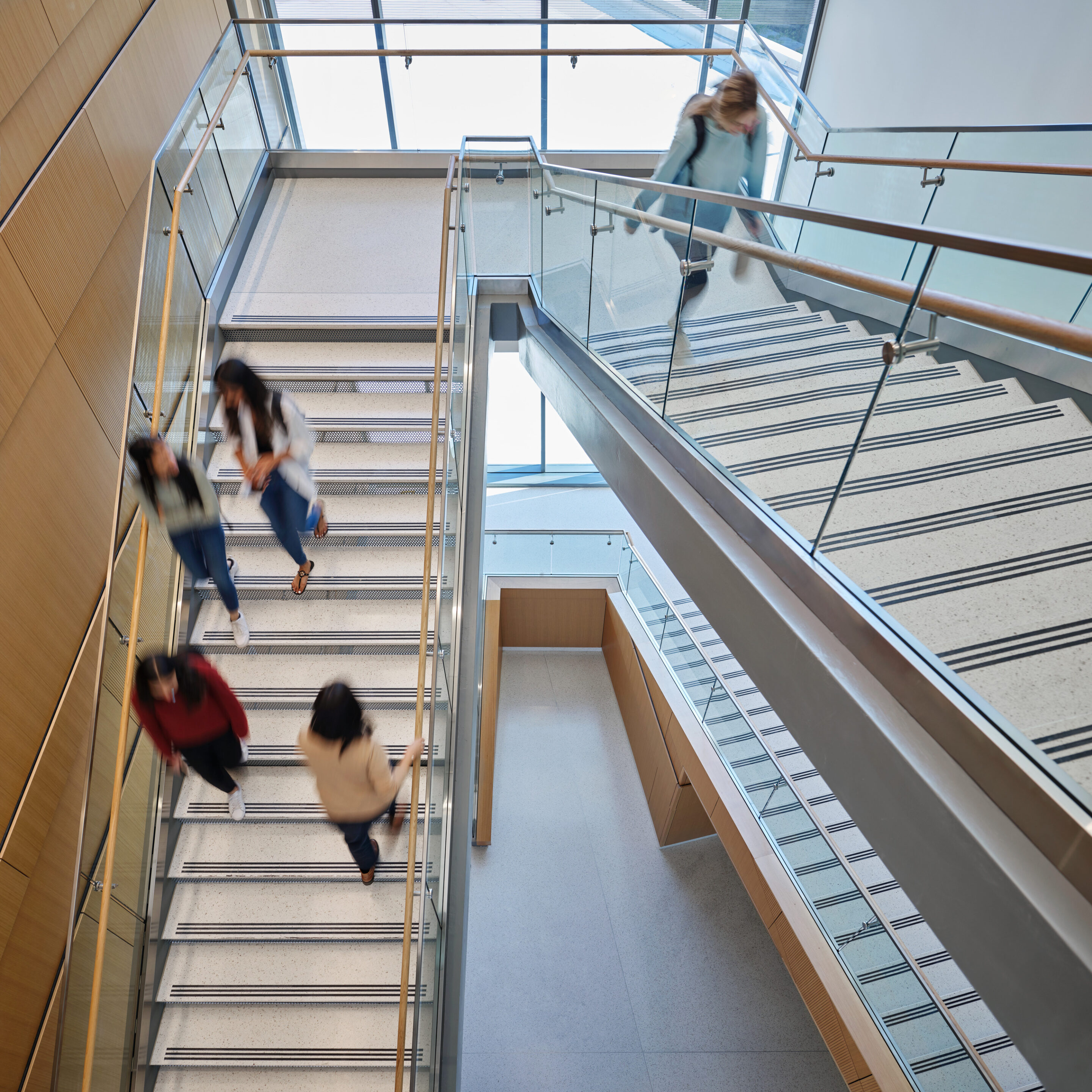Creating inclusive legal institutions
When designing the John M. O’Quinn Law Building at the University of Houston (UH), we worked closely with the institution’s leadership to create a prominent, top-tier law school environment that cultivates inclusion and embraces diversity. Through this distinctive project experience, UH challenged us to embrace a broader scope of understanding in how our daily architectural decisions—the look and feel of the building, the location and number of front doors, the type of security protocols, to the type, number, and name of the rooms—can make the built environment feel welcoming to all.

Defining inclusive spaces
As one of the most diverse law schools in the country, the new University of Houston Law Center is dedicated to providing modern, interdisciplinary legal education in a student-focused environment. The institution’s commitment to community outreach and inclusivity is made evident through a range of initiatives including:
-
- The Pre-Law Pipeline Program, which prepares undergraduates who are first-generation, low-income, or underrepresented in the legal profession
- The Diversity, Racial Justice, and Human Rights Initiative
- The Diversity, Equity and Inclusion Committee
- Courses and clinical work for students to service underserved communities who need legal representation
To accomodate these activities, the building includes instructional spaces, advocacy skills labs, student areas, courtrooms, event facilities, faculty and administration offices, student services, legal clinics, and a law library.
We worked closely with UH to define what it means to create inclusive spaces and understand their mission of building a Law Center that actively combats racism and inequities by educating lawyers to reflect and appreciate the diversity of clients. To design a building that embodied these goals, we reflected on every project decision and evaluated decisions against the following questions:
- Does this decision deny a sense of belonging to anyone?
- Does this decision limit access to anyone?
- Does this decision create a barrier for anyone?
We determined if the answer was “yes” to any of these questions, we needed a more equitable and inclusive solution. To do so, we established a diverse decision-making group consisting of students, faculty, and leadership to inform difficult decisions and ensure the building felt equitable. As an institution with a rich history of diverse leaders and successful first-generation college students, feedback from this group was instrumental in developing a building that reflected the ethos and potential of each individual.

Implementing change
Conversations with the diverse decision-making group guided specific design solutions that would eliminate barriers and enhance a sense of community and belonging immediately upon entering the building. With a building that is utilized by students and provides public access to free law services, we designed one central front door to create a sense of equality, as opposed to having two doors where one could be viewed as “lesser.” One front door allows all visitors to have the same initial experience of being in a space where they will be cared for. In a similar vein, there were many discussions during the design process around how people feel when they enter the building and are greeted by security. It was important to design a space where the security guard served as more of a concierge, greeting and directing visitors in the right direction. In order to maintain a secure building, more public spaces like the Event Room, Courtroom, and Clinics are located on the ground floor.
To further guarantee spaces feel welcoming and easy to navigate, the library is connected by a series of interconnected stairs and provides students with a variety of types of active and quiet study spaces. Removing any barriers between faculty and students, the top floors are dedicated to faculty offices, each with exterior views and connected by a double height space, fostering a sense of community and making resources easily accessible to students.
Additional student spaces are located on the second floor, forming a “living room.” Other inclusivity-centere amenities include an all-gender restroom on each floor and a “Medical Privacy” room, designed to provide a space for parents with young children as well as any other medical or private needs.
To further elicit interest and excitement within the community, the design team ran an Image Olympics to gather opinions and better understand what resonated in terms of materiality and space needs. This resulted in additions, including flexible seating and wood materials, that radiate warmth and belonging.

All these considerations were essential in creating a building that welcomes every single person in the Law Center community. When that first-generation college student shows up at the front door, the Law Center feels like their new home. When a person shows up to the legal clinic for legal representation, they feel supported. The John M. O’Quinn Law Building honors its history while looking forward to a bright, inviting future.

Natalie Thurman, AIA
Principal
Throughout her career, Natalie has worked on a wide range of healthcare, research, and higher education projects.




